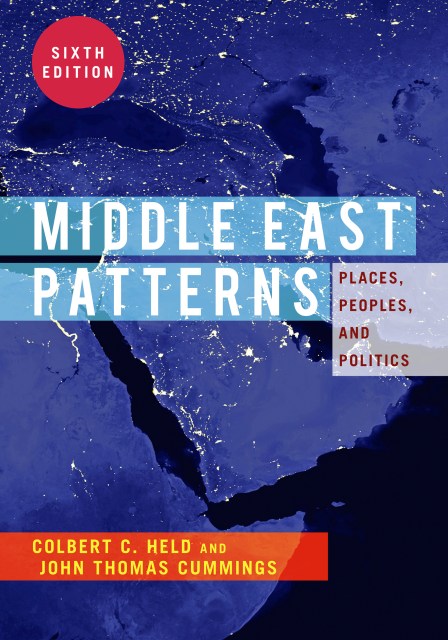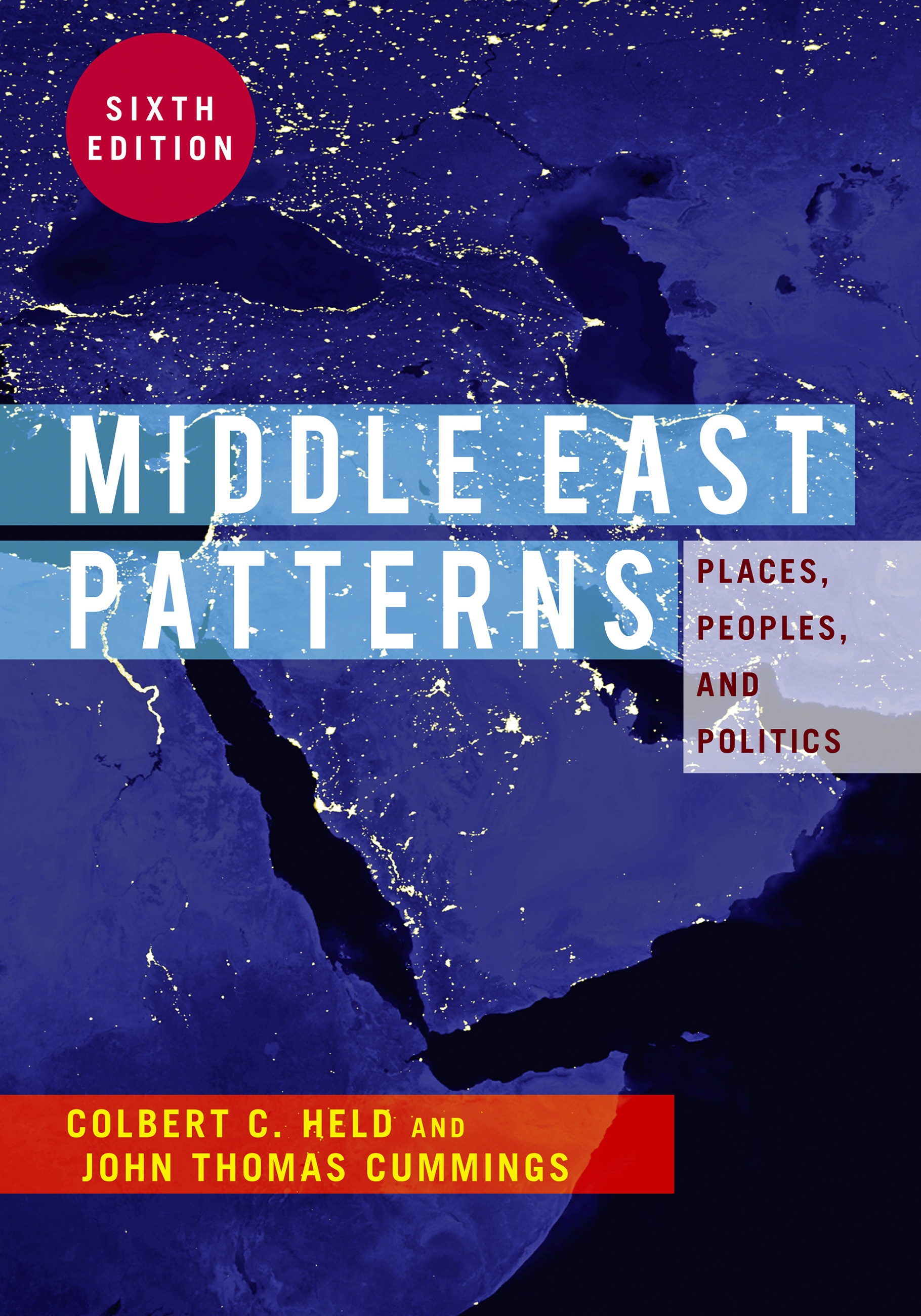By clicking “Accept,” you agree to the use of cookies and similar technologies on your device as set forth in our Cookie Policy and our Privacy Policy. Please note that certain cookies are essential for this website to function properly and do not require user consent to be deployed.
Middle East Patterns
Places, People, and Politics
Contributors
By John Thomas Cummings
Formats and Prices
Price
$60.00Format
Format:
- Trade Paperback $60.00
- ebook $36.99
- ebook $11.99
- Trade Paperback $60.00
- Trade Paperback $22.99
Also available from:
Now in its sixth edition, Middle East Patterns continues to be the most comprehensive and authoritative geographical study of the region. Colbert C. Held and John Thomas Cummings introduce the Middle East from a topical perspective and then provide in-depth country-by-country coverage. The sixth edition maintains the book's well-received framework and distinctive focus on a wide range of geographical patterns—ethnographic, economic, and political—while integrating updated comparative material on natural resources and human and social development. New sections on health issues, business environments, and the historical US presence in the region expand the book's ample coverage. Richly illustrated with more than 125 photos and 70 maps, this acclaimed book remains the best accessible resource for students and general readers who seek to understand the spatial dynamics of the Middle East.
Visit middleeastpatterns.com for historical timelines, archived content from the fifth edition, and updated material on current situations in the Middle East.
Genre:
- On Sale
- Dec 24, 2013
- Page Count
- 728 pages
- Publisher
- Avalon Publishing
- ISBN-13
- 9780813348773
Newsletter Signup
By clicking ‘Sign Up,’ I acknowledge that I have read and agree to Hachette Book Group’s Privacy Policy and Terms of Use







